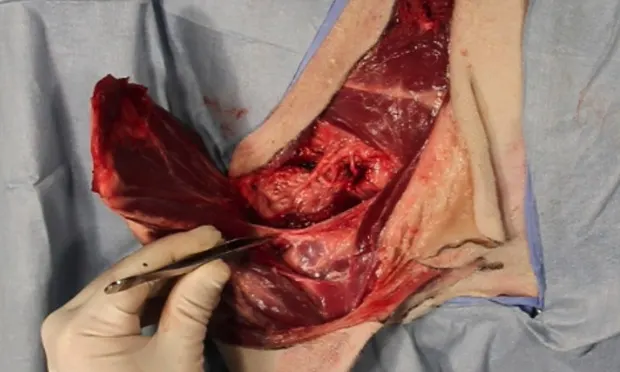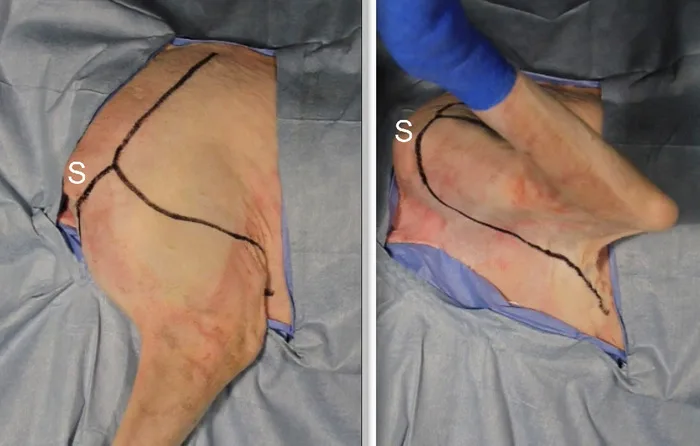
Forelimb amputation is a salvage procedure performed for traumatic injuries (eg, irreparable fractures, soft tissue wounds), severe neurologic or ischemic lesions confined to the forelimb (eg, brachial plexus avulsion), certain congenital deformities, invasive neoplasia, and uncontrolled infection.
The technique described here may be preferred because it readily exposes major nerves and vessels, does not require bone cutting, and results in a cosmetic wound, as no prominent scapula remains. This procedure also carries lower risk for postoperative pressure necrosis because scapular/bony prominences (eg, the acromion) are removed. This is also the preferred technique to remove neoplasia, particularly lesions located in the proximal forelimb, because it allows resection with extensive surgical margins.
Considerations for Large-Breed Dogs
Large- or giant-breed dogs undergoing forelimb amputation have difficulty adapting after surgery, particularly if they are obese or have concurrent neurologic deficits or significant contralateral limb osteoarthritis. Temporarily placing a sling on the affected limb may give owners a good idea about the pet’s ability to adapt following the procedure. The veterinarian and owner must weigh the risk for disability against the immediate benefit of pain relief after removal of a debilitating neoplastic process or elimination of a life-threatening limb infection.
Before the Procedure
IV prophylactic antibiotics targeting skin contaminants should be administered to ensure optimal blood and tissue concentrations when the wound is created and throughout the procedure. Moderate to severe pain should be anticipated, especially during the first 24 hours after amputation.
Appropriate preemptive analgesic medications are warranted, and multimodal analgesia (including opioids) should be administered. In general, no blood products are needed in otherwise stable patients. However, a large-bore venous catheter is required if the need for rapid fluid infusion or transfusion should arise.
Step-by-Step: Forelimb Amputation
What You Will Need
Standard general surgery pack
Self-retaining (eg, Gelpi) or handheld (eg, Senn) retractors
Bone-holding forceps (eg, Kern) or stout towel clamp
2-0 to 4-0 monofilament absorbable and nonabsorbable suture

STEP 1
(A) Place the patient in lateral recumbency with the affected limb uppermost. (B) Hang and prepare the entire limb up to the dorsal midline, including ample surrounding skin, for aseptic surgery. For ventrum preparation, extend the ventral margin to the sternum, caudally to the fourth or fifth rib margin and cranially to the midcervical area. This will allow the limb to be shifted in the surgical field to facilitate dissection. Mark the planned incision site with a sterile pen.
S = shoulder joint
Author Insight: Studying an anatomy textbook closely before performing this procedure can be extremely helpful. The regional anatomy can be confusing, and excessive dissection and unnecessary collateral damage to surrounding structures can result in increased risk for wound complications.
Postoperative Care
Exercise should be limited until suture removal at 14 days. Some patients benefit from mild wound compression with an elastic body suit or conforming soft bandage. Cold compresses seem to help reduce mild wound edema postoperatively for up to 3 days (5 minutes, q8h). When no contraindications exist, appropriate oral analgesics, including NSAIDs, should be administered for 3 to 5 days after surgery.